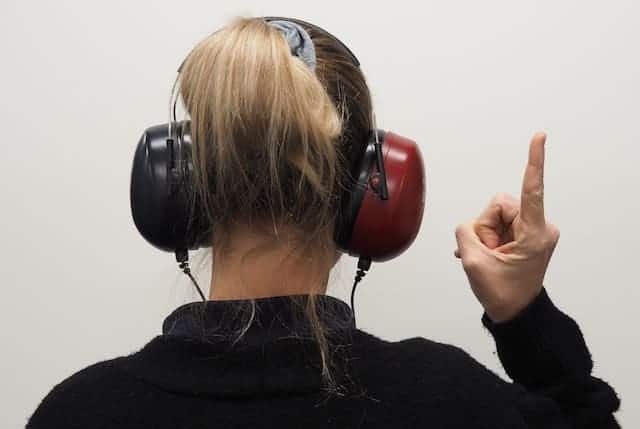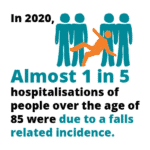
Hearing loss is a serious and prevalent health issue in many workplaces.
Millions of people all over the world have hearing loss and many of these cases can be attributed to preventable factors, such as exposure to loud noise in the workplace (World Health Organization, 2018).
The economic burden of hearing loss in Australia is extremely high. With healthcare costs and losses in productivity, the national cost impact attributed to hearing loss was $33.3 billion in 2017 (HCIA, 2017).
Preventing hearing loss in the workplace is crucial, not only for the health and safety of workers but also for the success of businesses. By implementing effective prevention strategies, employers can reduce the incidence of hearing loss and its associated costs, including the costs of hearing aids, workers’ compensation claims, and poor performance.
Common Causes of Hearing Damage in the Workplace
When it comes to hearing loss in the workplace, there are several common causes that can lead to long-term damage to our hearing abilities. One of the most prevalent causes is ear damage from loud noises. The decibel scale is used to measure the loudness of sound, with damage resulting from a combination of the loudness of a sound and the length of exposure. In the workplace, loud machinery, power tools, and equipment can all contribute to harmful levels of noise exposure. To reduce the risk of hearing loss, a hierarchy of measures should be considered, starting with elimination, substitution, engineering controls, administrative controls, and ending with personal protective equipment e.g. ear muffs or ear plugs (Safe Work Australia).
With the maximum daily occupational noise exposure level in Australia currently set at 85 dB, it is estimated that over 1.1 million workers have been exposed above this limit, with machine operators and construction workers being the most exposed. Occupational noise-induced hearing loss is common, with 7-21% of adult hearing loss attributed to it globally. In Australia, more than 16,000 compensation claims were made for industrial deafness from 2002 to 2007, but the actual number of affected workers is likely higher (Si, 2020).
Chemical exposure is another common cause of impaired hearing in the workplace. Exposure to certain chemicals, such as solvents and heavy metals, can damage the inner ear and cause hearing loss. Chemicals can enter the body through inhalation, ingestion, or skin contact, making it important for workers to wear appropriate protective equipment when working with these substances.
Physical trauma can also lead to hearing damage in the workplace. This can occur from accidents like head injuries or sudden changes in air pressure, such as explosions or rapid decompression. It is important for employers to take steps to prevent accidents from happening, and to provide appropriate safety equipment to workers in high-risk positions.
By implementing proper safety measures and protective equipment, employers can create a safe and healthy work environment for their employees.
Hearing Loss Prevention in the Workplace
There are several strategies that can be used to prevent hearing loss in the workplace. In the first place, engineering controls, such as noise barriers and soundproofing, should be used to reduce noise levels in the workplace. Education and training can help workers understand the risks of workplace noise exposure and learn how to protect their hearing. Regular hearing testing can help to identify hearing loss early, allowing for prompt intervention.
Using hearing protection in noisy workplaces, such as earplugs, are very effective in reducing the risk of noise-related hearing loss. These reduce the amount of noise that reaches the ear and help to prevent permanent hearing damage.
The Role Of Employers In Preventing Hearing Loss
Employers have a crucial role to play in preventing workplace hearing loss. They are responsible for providing a safe and healthy workplace, which includes protecting workers from exposure to noise and other hazards. Compliance with safety regulations, such as those set by the Occupational Safety and Health Administration (OSHA), is essential for ensuring worker safety. Employers should also encourage workers to report potential hazards that could have a negative impact on others or the business (Kumis, 2007).
Preventing hearing loss in the workplace is essential. By implementing effective prevention strategies, such as the use of hearing protection and regular hearing testing, employers can help to reduce the incidence of workplace hearing loss. Compliance with safety regulations and a commitment to worker education and training is also critical. Ultimately, prioritising worker safety and health is not only the right thing to do, but it can also have significant benefits for businesses, including increased productivity and decreased costs associated with hearing loss treatment and litigation.
Book a hearing assessment with Lions Hearing Clinic today
References:
World Health Organization. Addressing the Rising Prevalence of Hearing Loss. February 2019. https://apps.who.int/iris/bitstream/handle/10665/260336/9789241550260-eng.pdf
Kurmis AP, Apps SA. Occupationally-Acquired Noise-Induced Hearing Loss: A Senseless Workplace Hazard, International Journal of Occupational Medicine and Environmental Health, 20(2):127–136. 2007. DOI 10.2478/v10001-007-0016-2
Si S, Lewkowski K, Fritschi L, Heyworth J, Liew D, Li I. Productivity Burden of Occupational Noise-Induced Hearing Loss in Australia: A Life Table Modelling Study. Int J Environ Res Public Health. Jun 29;17(13):4667. 2020 doi: 10.3390/ijerph17134667.
Safe Work Australia, Model Code of Practice: Managing noise and preventing hearing loss at work, 2020. https://www.safeworkaustralia.gov.au/doc/model-code-practice-managing-noise-and-preventing-hearing-loss-work






